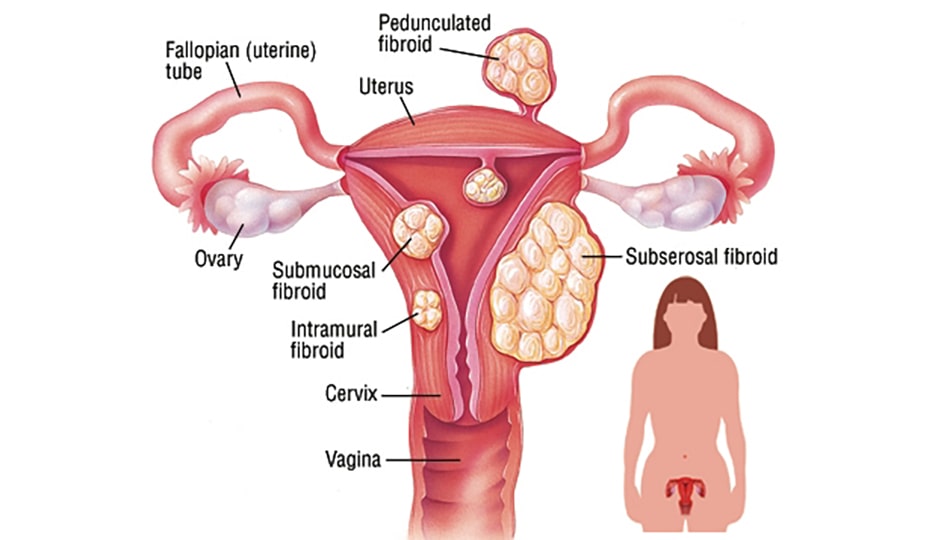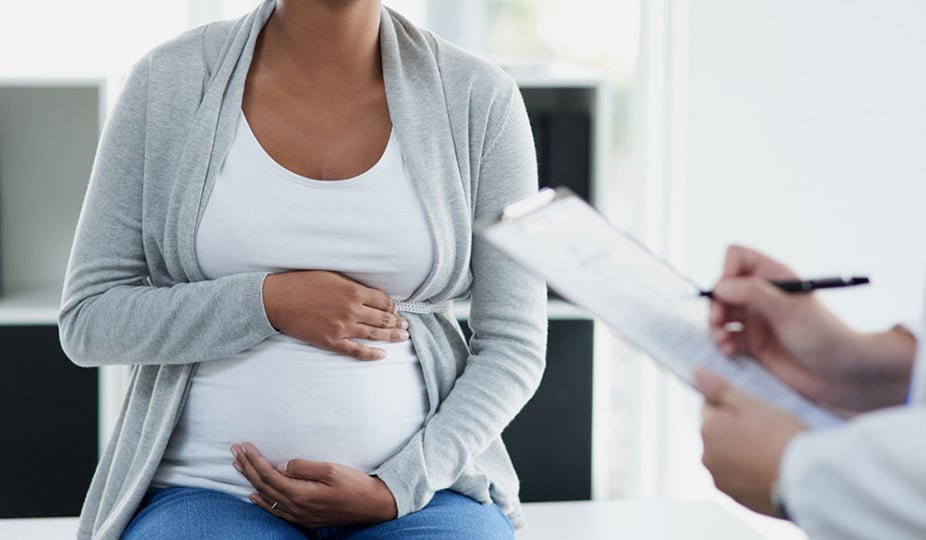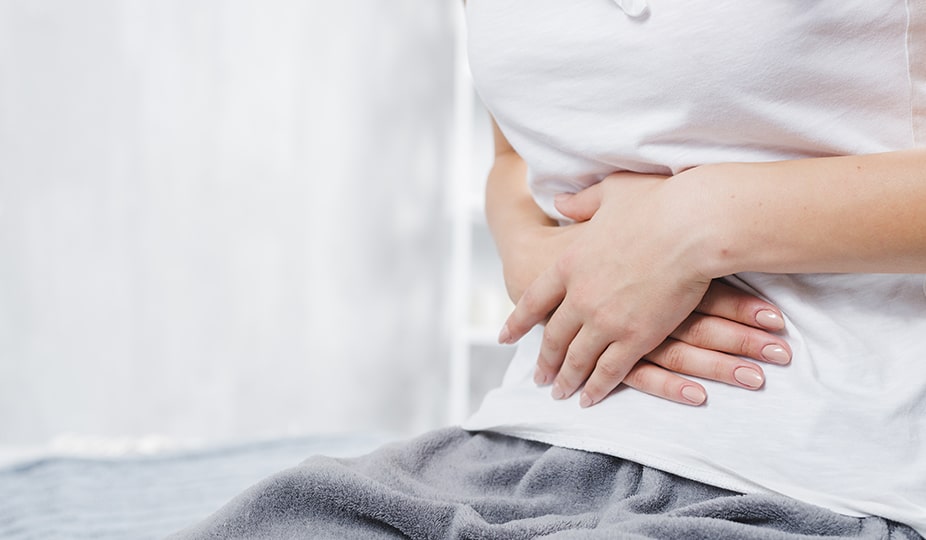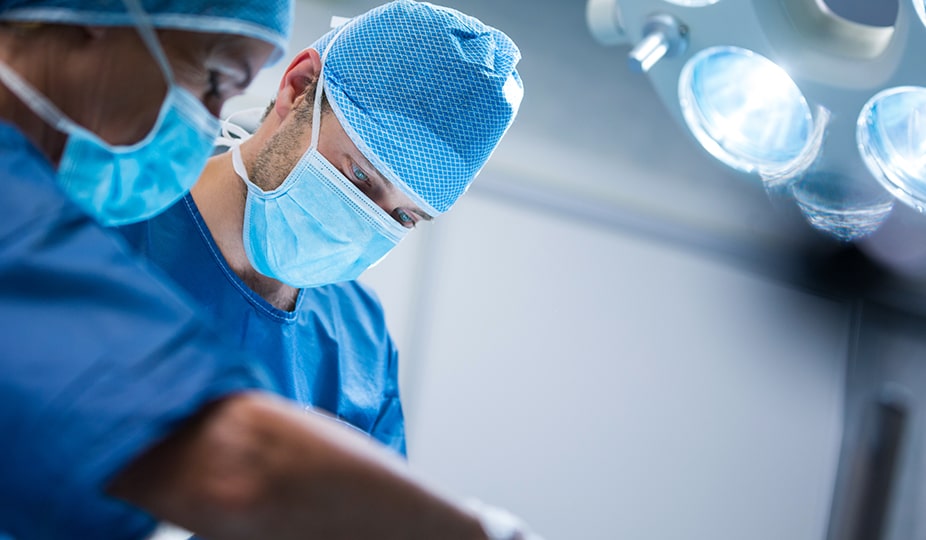Uterine Fibroids and Pregnancy – Causes, Symptoms & Treatment
All women who have revealed this benign tumor are concerned about the effect of uterine fibroids on conception and pregnancy.

Recently, the frequency of uterine fibroids detection during pregnancy has highly increased. Firstly, pregnancy after 30 y.o. has become more common. Secondly, there are better diagnostic methods. In particular, doctors widely use ultrasound and other techniques.
Of course, every woman who faces this problem worries about myoma’s effect on pregnancy and childbirth.
What Are Uterine Fibroids? – Definition
Uterine fibroids are benign, monoclonal, well-delimited, encapsulated tumors originating from the cervix’s smooth muscle cells or uterine body. It is one of the most common benign tumors of the female genital area, which occurs in 20-40% of women of reproductive age.
Initially, fibroids grow from muscle cells of the uterine wall. According to recent studies, this disease affects about 70% of women. Most of them do not even know about it.
In most cases, nodular fibroids of the uterus develop asymptomatically and slowly. Its value can range from a few millimeters to 30 cm in diameter. It rarely transforms into a malignant tumor.
However, in the United States, uterine fibroids are a disease that causes 200,000 hysterectomies (removal of the uterus) per year.
Types of Uterine Fibroids
Depending on the location within the uterus, there are the following types of fibroids.

Subserosal uterine fibroids
Its location is the outer layer of the uterus. Subserosal uterine fibroids do not become evident until they reach large sizes and begin to interfere with the normal functioning of neighboring organs.
Submucosal fibroids
They grow inside the uterine cavity in its internal layers. These fibroids can cause severe bleeding, abdominal pain. In the case of growth, they prevent spermatozoa from moving through the fallopian tubes and cause their blocking. Consequently, it can make natural fertilization problematic or impossible.
Interstitial (intramural) fibroids
It is the most common form of uterine fibroids. It is located in the walls of the uterus. As the fibroids grow, they cause pain and cramping, uterine bleeding. Moreover, the organ significantly increases in size, which causes discomfort to the woman.
Broad ligament, complex fibroids
They locate within the uterine ligaments. Their surgical removal has a high risk of damaging blood vessels and adjacent internal organs.
Pedunculated fibroids
They are a consequence of the appearance of stalk-like legs in subserosal fibroma. Their growth causes an excess of the peduncles and severe pain in the lower abdomen.
Cervical fibroids
Fibroid tumors can attach to other organs. Fibroma of the cervix belongs to this category.
Uterine Fibroids and Pregnancy

Asymptomatic and small fibromas do not interfere with the conception of a child. Difficulties arise in the formation of fibroid tumors that block the fallopian tubes, which is why sperm can not fertilize the oocyte.
Fibroids in pregnant women can adversely affect the course of pregnancy. They reduce the free space in the uterus and prevent the embryo from developing. As a result, premature birth, late miscarriages are possible. Besides, large fibroids complicate childbirth, and can be an indication for cesarean section.
What Causes Uterine Fibroids
According to scientific data, two main factors cause the development of uterine fibroids.
- hereditary factor;
- increased hormonal sensitivity to estrogen.
Additionally, the onset of the disease is contributed by:
- abortions, diagnostic curettage;
- injuries received during childbirth;
- late start of the first menstruation;
- lack of pregnancy and childbirth up to thirty years;
- gynecological pathologies complicated by systemic disorders;
- the chronic forms of the reproductive system disorders;
- irregular sex life from the age of 25;
- inability to experience orgasm;
- hypertension;
- stress;
- thyroid disease;
- diabetes;
- obesity;
- sedentary lifestyle.
Scientists have noticed that the risk of uterine fibroids development increases with age. Since the disease is hormone-dependent, it does not develop in girls until their first menstruation and in women during the menopause.
Uterine Fibroids Symptoms – How to Recognize the Disease

Usually, uterine fibroids progress without any apparent signs. Only 15–25% of patients show clinical symptoms that depend on the size and location of the benign tumor, the growth direction of the fibroid nodes. These include:
- menorrhagia (heavy and prolonged menstrual bleeding), leading to anemia;
- metrorrhagia (menstruation of a non-cyclic nature);
- severe pain and cramping of the abdominal cavity;
- allocation of blood clots;
- heaviness in the pelvic area (occurs as a result of the tumor nodes pressure on the adjacent organs);
- pain in the perineum and lower back.
If uterine fibroids press on the bladder, urination increases. When it pushes the ureter, hydronephrosis occurs. If it pressures the walls of the rectum, the woman feels constipation and pain during defecation.
In case you have similar symptoms, consult a doctor immediately. It’s easier to prevent the disease than to deal with the consequences.
Diagnostics of Uterine Fibroids
During the examination on a gynecological chair, the doctor determines that the uterus is enlarged and has a dense texture and a tuberous surface. Furthermore, doctors detect nodes in the uterine cavity during the ultrasound. This method allows determining the location of tumors, their relationship to neighboring structures.
Using x-ray or ultrasonic hysterosalpingography (HSG), the doctor can detect a submucous form of fibroma in the endometrial cavity. If the patient complains of bleeding during the intermenstrual period, it is necessary to exclude cancer during the diagnostics. Therefore, a gynecologic oncologist can make the following examinations:
- separate diagnostic curettage;
- an endometrial biopsy followed by histological examination of the material.
Before making a final uterine fibroids diagnosis, doctors should exclude:
- uterine sarcoma;
- ovarian cysts.
To do this, they use:
- Magnetic resonance imaging (MRI);
- CT scan.
In a situation where it is impossible to distinguish uterine fibroids from ovarian cancer using non-invasive methods, they can use diagnostic laparoscopy. Using a laparoscope, the doctor inserts an endo-video camera into the uterine cavity through small holes in the abdominal wall. The camera transmits the resulting image to a six-color color monitor.
Uterine Fibroids Treatment
If the disease is asymptomatic, the doctor should observe it in dynamics. Additionally, specialists use expectant tactics if patients have menopause.
Indications for conservative therapy are:
- the size of uterine fibroids does not exceed 12 weeks of pregnancy;
- interstitial or subserosal arrangement of nodes;
- the presence of pain;
- lack of metro and menorrhagia.
During the conservative uterine fibroids treatment, a woman should take:
- iron supplements;
- non-steroidal anti-inflammatory drugs;
- hormonal drugs;
- vitamins.
To suppress the synthesis of ovarian steroids, doctors use Danazol, Gestrinone, and other derivatives of androgens. A woman should take them for up to eight months. To normalize the growth of the endometrium, doctors recommend gestagens, such as Norethisterone, Progesterone, Dydrogesterone. Taking progestogens is justified only for small fibromas with concomitant endometrial hyperplasia.
To stop the growth of fibrotic nodules, the intrauterine hormonal device Mirena helps. It contains the gestagen levonorgestrel (LNG) hormone, which provides a contraceptive effect and prevents further growth of a benign tumor.
Combined oral contraceptives can slow down the development of fibrotic nodes, the diameter of which does not exceed 2 centimeters. The course of treatment is three months.
Uterine Fibroids Removal – Surgical Treatment

Surgical treatment of uterine fibroids is the advised solution if:
- there are severe clinical symptoms;
- nodular formations are large;
- the patient has complications, such as an ovarian tumor, endometriosis, or necrosis of the fibroid nodes.
Removal of fibroids is possible by performing conservative myomectomy by laparoscopic, vaginal, or laparotomic access. During the operation, a surgeon removes the fibrous node and preserves the uterus. If the fibroids are submucosal, the doctor may resort to a hysteroscopic myomectomy without incisions. Doctors use organ-preserving operations for women who are planning a pregnancy in the future.
Among the modern methods of uterine fibroids treatment is uterine artery embolization. Within the process, doctors cross the vessels feeding the neoplasm, which blocks local blood circulation. Therefore, nutrients do not enter the fibroids, and their growth stops. This method is beneficial and, most importantly, safe. It allows you to preserve women’s reproductive health.
Moreover, one can use ultrasonic ablation to remove fibroids. During the procedure, the nodes are ‘evaporated’ by ultrasound. Doctors monitor Each step of the surgery with MRI.
The most common complications that occur after surgery to remove uterine fibroids are:
- bleeding;
- postoperative infection;
- the formation of adhesions in the small pelvis;
Uterine Fibroids and IVF Pregnancy
Most often, women face this diagnosis at the age of 30. Doctors detect it in 10% of patients who turn to the help of advanced reproductive techniques. Therefore, many patients are worried about the success of IVF with uterine fibroids.
Fortunately, this disease in itself is not a contraindication. However, it can be the reason for failed artificial insemination. The mechanism of influence of this disease on fertilization is not fully known. But if you answer the question of if you can make IVF with uterine fibroids, the answer is yes. Qualified doctors carry out successful IVF programs with this diagnosis. However, no one can guarantee that the disease will not interfere with the successful onset of IVF pregnancy.
What factors can affect IVF with uterine fibroids are as follows.
- Abnormal blood circulation.
- Violation of myometrial contractility.
- Thinning or atrophy of the endometrium.
- Inflammatory processes.
- Decreased number of glands.
- Hormonal disorders.
All of these adverse changes often accompany disease and increase the risk that a fertilization program will fail. Therefore, we recommend not to take risks. First, treat or remove the fibroids, and only then carry out artificial insemination. Do not worry if IVF is possible with uterine fibroids – our clinics employ specialists of different profiles. You can consult an IVF expert for free, make an appointment, and discuss treatment options. We will help you choose an experienced doctor and treatment center to create an optimal therapy plan.

Remember that each case is different. Our practice shows that artificial insemination is sufficient if the nodes’ size does not exceed 30 mm, and the organ is not deformed. In such cases, you can do without prior therapy and surgery.
Uterine Fibroids and Pregnancy FAQ

Answering the question, what is the difference between fibroma and fibroids, you should know the following. The fibroid is a benign tumor, in the structure of which connective tissue predominates. Myoma is a benign tumor of the uterus, which bases on muscle fibers. Fibroids are easier to cure using conservative methods. Myoma in the vast majority of cases needs surgical removal.
The probability that uterine fibroids will transform into a malignant tumor is minimal, 1%. At the same time, the disease can prevent the onset of pregnancy and lead to premature birth, late miscarriages. The neglected forms of pathology provoke severe bleeding, anemia.
There is no specific prevention of uterine fibroids. Doctors recommend that women exclude provoking factors: abortion; uncontrolled use of contraceptives; early treatment of acute and chronic inflammation. It would be best if you also make an ultrasound of the uterus once a year and regularly visit a gynecologist.